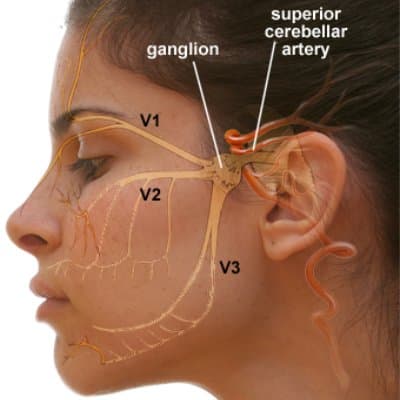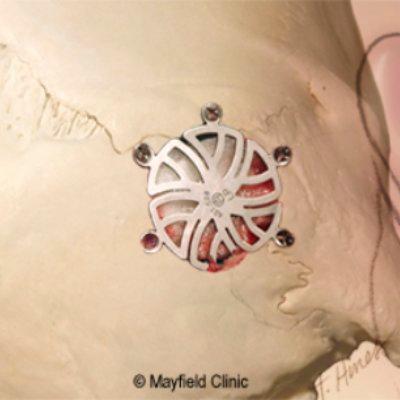
What is Microvascular Decompression Surgery?
Pain Relief that Lasts
Tyler Neurosurgical is proud to offer surgical treatment options for facial pain and/or spasm caused by trigeminal neuralgia, hemifacial spasm, or glossopharyngeal neuralgia. Medications are usually the first line of treatment, but if they become ineffective or cause intolerable side-effects, microvascular decompression surgery (MVD) can offer long-term relief.

MVD is a surgical procedure performed to alleviate symptoms caused by vascular cranial nerve compression at the brainstem–more specifically, the cranial nerves responsible for facial and oral/pharyngeal sensation and facial movement. These nerves can become intertwined with or may sit against a blood vessel , which causes pressure on the nerve as the vessel pulsates and sends pain and/or spasms into one side of the face or mouth. The surgery involves identifying the point of compression and placing a small cushion between the compressing blood vessel and the nerve.
During the procedure, the patient is placed under general anesthesia. An incision is made behind the ear on the affected side, and a small opening is created in the skull to expose the affected area. The surgeon then carefully identifies the compressed nerve under the microscope. He gently moves the blood vessel away from the nerve and inserts a small Teflon sponge between the nerve and the vessel to prevent nerve compression.

Microvascular decompression surgery offers several benefits:
- Long-term relief: MVD surgery provides long-term relief for patients suffering from chronic facial pain or spasm caused by vascular cranial nerve compression. Only 20% of patients report having any pain within the next decade when MVD is used to treat trigeminal neuralgia. Other procedures such as brain stereotactic radiosurgery (Gamma knife) or percutaneous stereotactic rhizotomy (PSR) have a 3-5 year recurrence rate, which can sometimes be resistant to repeat/additional treatments due to the damaging nature of the procedures to the affected nerve.
- Full Neurologic Recovery: The precise nature of the procedure and microsurgical technique minimizes the chances of damaging the affected cranial nerve, surrounding cranial nerves, or surrounding brain tissue, which preserves neurologic function and, in turn, facilitates recovery. The procedure requires an average hospital stay of two nights, and you can expect to return to normal daily activities within 4-6 weeks. What’s more, MVD causes little to no long-term facial numbness compared to other procedures like Gamma Knife or PSR, which damage the nerve and can cause permanent numbness.
- High Success Rate: MVD has a long-term success rate of approximately 80% as a stand-alone treatment for trigeminal neuralgia.
Not everyone is a candidate for MVD, but our experienced surgeons have used the technique to relieve pain for thousands of patients. To find out if this procedure is right for you, contact our team today!
